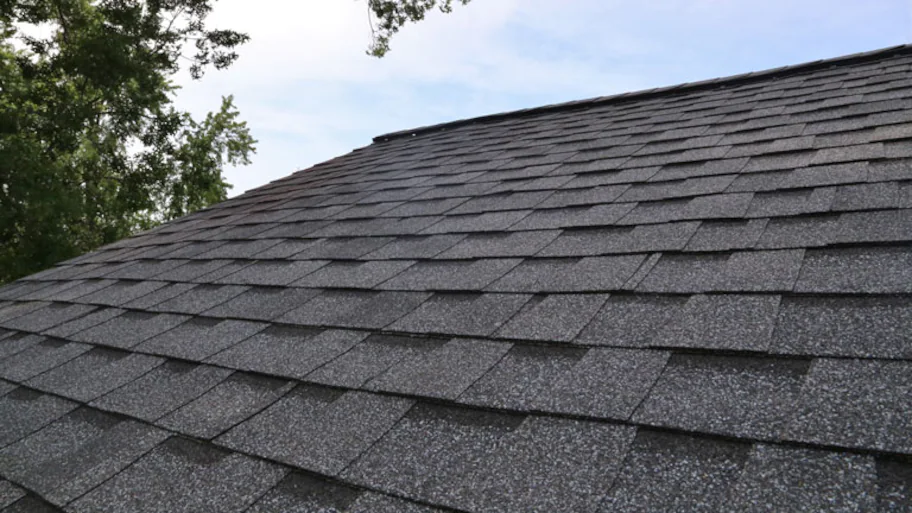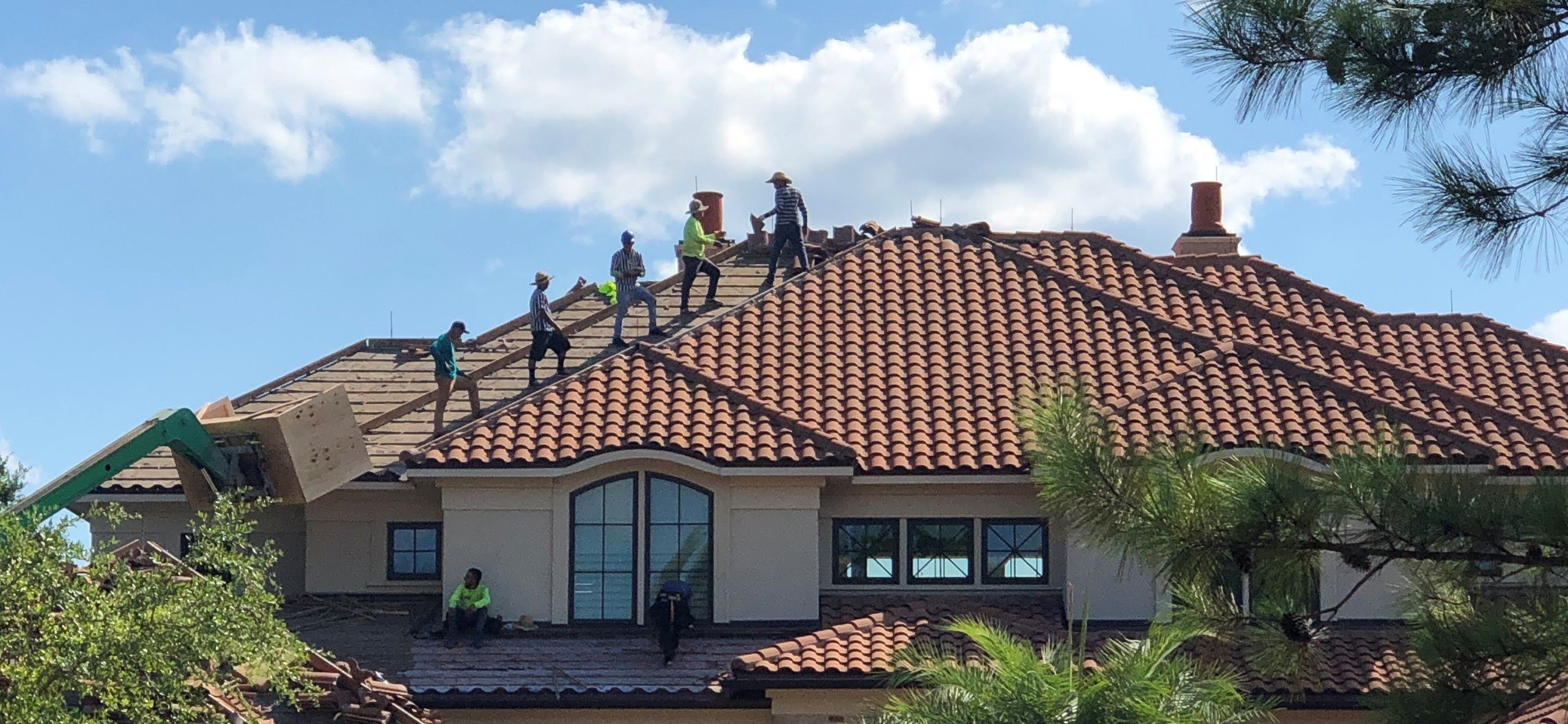Examining the Providers Supplied by Roofing Companies in Gainesville Florida
Examining the Providers Supplied by Roofing Companies in Gainesville Florida
Blog Article
Finest Practices for Ensuring Appropriate Roof Covering Air Flow
A balanced consumption and exhaust vent proportion, commonly 1:300, plays an essential duty, with intake vents ideally placed at the reduced edge of the roofing system for great air access and exhaust vents at the peak for cozy air departure. Keeping insulation away from vents is critical to stop air flow restriction.
Understand Ventilation Essentials
Correctly understanding air flow fundamentals is essential for ensuring the long life and efficiency of roof systems. Effective ventilation mitigates dampness accumulation and temperature level extremes in the attic room, both of which can bring about considerable architectural damages gradually. A well-ventilated roof covering assists in avoiding usual concerns such as mold development, wood rot, and ice dams, which can endanger the integrity of the roofing products and the underlying structures.
The primary objective of air flow is to help with the motion of air, enabling a consistent exchange in between the interior and outdoor settings. This balance is accomplished with a mix of consumption and exhaust vents that collaborate to preserve ideal air flow. Consumption vents, typically situated along the soffits or eaves, allow fresh air to get in the attic space, while exhaust vents, typically positioned at or near the roof covering ridge, enable hot, moist air to get away.
Secret aspects influencing the efficiency of roof ventilation include correct positioning, ample sizing, and making certain that both consumption and exhaust vents are unblocked. Normal examination and upkeep are critical to determine possible clogs, damage, or inadequacies in the ventilation system, thereby guarding the roof covering's performance and sturdiness.
Kinds Of Roofing Vents
Roofing vents play a critical role in preserving effective attic room air flow and, by expansion, the general health and wellness of the roof. Numerous kinds of roof vents are offered, each with distinct advantages customized to particular roofing requirements. Ridge vents, for example, are installed along the roof's top, enabling warm, moist air to get away from the attic. They use continual air flow and blend flawlessly with the roofline, making them both reliable and visually pleasing.

Soffit vents are installed under the eaves and operate in tandem with roofing system vents to make sure a well balanced consumption and exhaust system. By allowing cooler air to go into from below, soffit vents help with the expulsion of hot air via top vents. Gable vents, located on the exterior wall surfaces of the attic room, offer one more reliable service, particularly in homes with gable roofings.
Evaluate Your Present Air Flow

Next, take into consideration the age and condition of your roof covering materials and air flow components. Older systems may not adhere to present building codes or might have worn away in time, lowering their performance. Conduct a detailed exam to recognize any type of indicators of wear and tear, such as rust, damages, or spaces that can compromise the system's efficiency.
In addition, gauge the attic room temperature level and moisture levels. Heats and moisture can show inadequate air flow - roofing companies in gainesville florida. Utilize a hygrometer and thermometer to get accurate analyses, contrasting them with outdoor problems. Consistent discrepancies recommend potential concerns that need addressing.
Installation Best Practices
Reliable setup of roofing air flow systems is vital for ensuring optimum performance and longevity. Proper installment starts with recognizing the particular ventilation needs of the roof covering and the structure it covers. This entails calculating the appropriate ratio of intake to tire vents, normally sticking to the 1:300 regulation, which states one square foot of air flow for each 300 square feet of attic flooring space.

Intake vents should be mounted at the roof covering's lower side, typically in the soffits, to enable awesome air to enter. Exhaust vents, on the various other hand, must be installed my company near or at the roof covering's height to promote the leave of cozy, moist air.
Seal all air vent links meticulously to protect against air leakages and potential water infiltration. Use high-quality products and adhere to producer standards to guarantee longevity and performance. Furthermore, incorporating ridge vents with baffles can dramatically boost air movement effectiveness by preventing wind-driven rainfall and snow from getting in the attic.
Eventually, accurate installment of roof ventilation systems mitigates potential issues such as mold and mildew development, ice dams, and structural damage, making certain the roof covering's honesty and the building's overall wellness.
Normal Upkeep Tips
Consistency in upkeep techniques is basic to making sure the lasting performance of roofing ventilation systems. Routine inspections are important, ideally executed biannually-- in the spring and loss. During these assessments, ensure that vents are without particles, nests, and various other blockages that can restrain air flow. Examine for any indications of wetness buildup or mold and mildew, as these visit the site can show improper ventilation or leakages (gainesville fl roofing companies).
Make use of a soft brush or a vacuum cleaner to remove dirt and particles from intake and exhaust vents. Be cautious not to harm the vent screens or louvers during the process.
Appropriate insulation is similarly essential. Make sure that attic insulation does not obstruct the vents, as this can seriously limit airflow. If any kind of insulation has actually shifted or resolved, rearrange or change it to preserve an effective obstacle.
Finally, replace any kind of damaged or missing out on parts without delay. Busted vents, split roof shingles, or scrubby flashing can all add to poor ventilation and must be addressed immediately. Regular maintenance makes certain that the roofing ventilation system operates optimally, thus prolonging the life expectancy of the roof covering itself.
Verdict
Making sure correct roof covering ventilation is paramount for maintaining the efficiency and longevity of a roof system. Adherence to the 1:300 intake and exhaust air vent ratio, paired with the critical positioning of vents, is necessary.
A balanced intake and exhaust air vent proportion, commonly 1:300, plays an essential role, with intake vents ideally positioned at the lower edge of the roofing for trendy air entrance and exhaust vents at the height for warm air leave. Intake vents, usually situated along the soffits or eaves, allow fresh air to get in the attic room room, while exhaust vents, often situated at or near the roof ridge, allow warm, humid air to escape.
Soffit vents are mounted under the eaves and job in tandem with roof covering vents to guarantee a balanced intake and exhaust system. By allowing cooler air to go into from below, soffit vents promote the expulsion of hot air with upper vents. Adherence to the 1:300 consumption and exhaust air vent ratio, coupled with the critical placement of vents, find this is essential.
Report this page